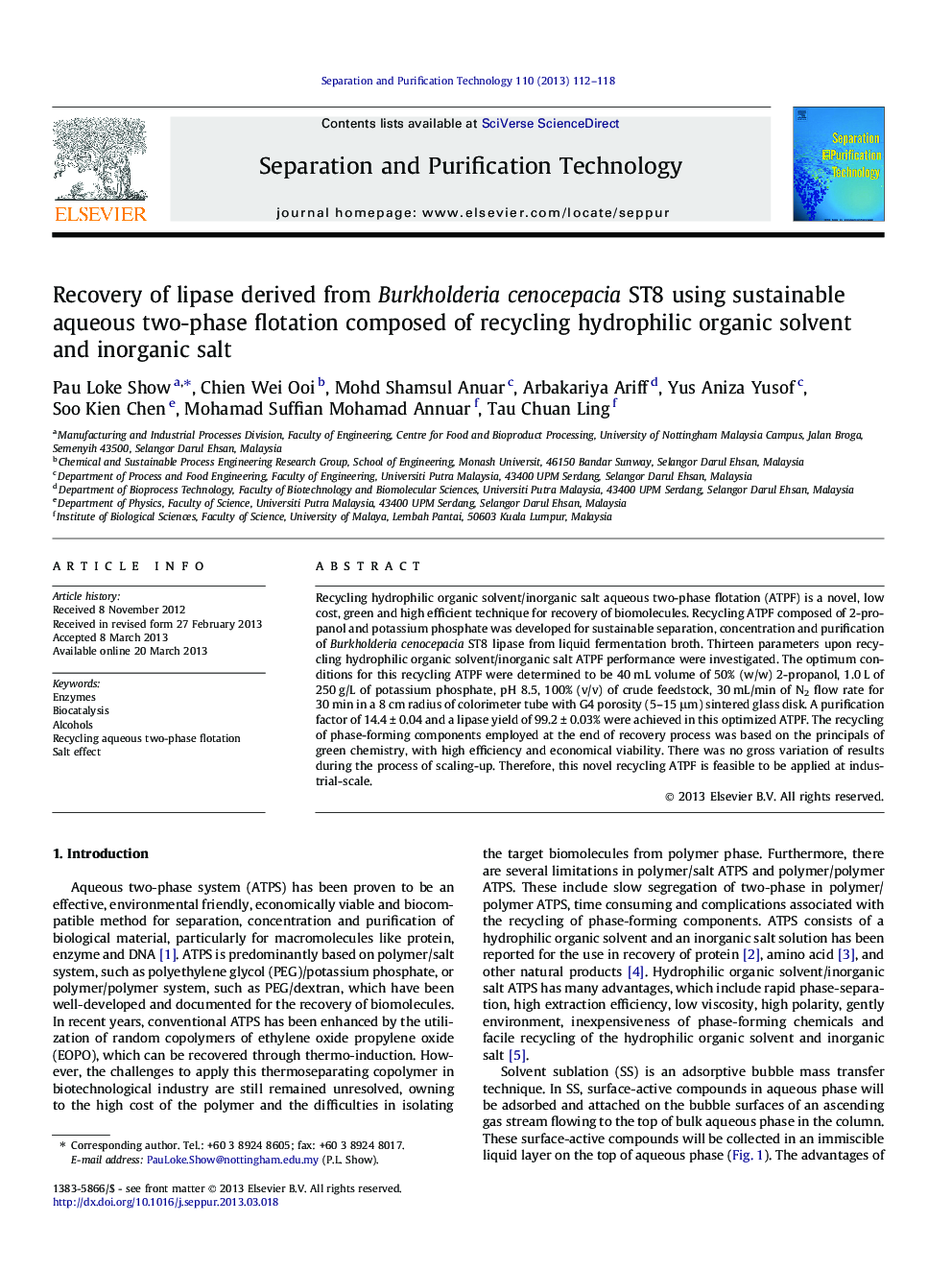| Article ID | Journal | Published Year | Pages | File Type |
|---|---|---|---|---|
| 641700 | Separation and Purification Technology | 2013 | 7 Pages |
•Lipases successfully recovery by using recycling aqueous two-phase flotation (ATPF).•ATPF is an integration of aqueous two-phase system (ATPS) and solvent sublation (SS).•ATPF is a novel, sustainable and low cost protein recovery method.
Recycling hydrophilic organic solvent/inorganic salt aqueous two-phase flotation (ATPF) is a novel, low cost, green and high efficient technique for recovery of biomolecules. Recycling ATPF composed of 2-propanol and potassium phosphate was developed for sustainable separation, concentration and purification of Burkholderia cenocepacia ST8 lipase from liquid fermentation broth. Thirteen parameters upon recycling hydrophilic organic solvent/inorganic salt ATPF performance were investigated. The optimum conditions for this recycling ATPF were determined to be 40 mL volume of 50% (w/w) 2-propanol, 1.0 L of 250 g/L of potassium phosphate, pH 8.5, 100% (v/v) of crude feedstock, 30 mL/min of N2 flow rate for 30 min in a 8 cm radius of colorimeter tube with G4 porosity (5–15 μm) sintered glass disk. A purification factor of 14.4 ± 0.04 and a lipase yield of 99.2 ± 0.03% were achieved in this optimized ATPF. The recycling of phase-forming components employed at the end of recovery process was based on the principals of green chemistry, with high efficiency and economical viability. There was no gross variation of results during the process of scaling-up. Therefore, this novel recycling ATPF is feasible to be applied at industrial-scale.
Graphical abstractFigure optionsDownload full-size imageDownload as PowerPoint slide
